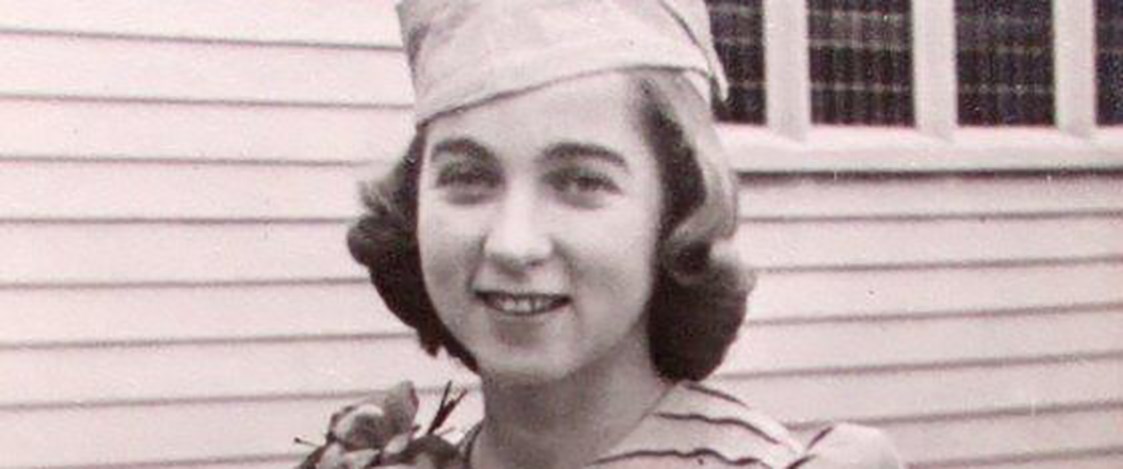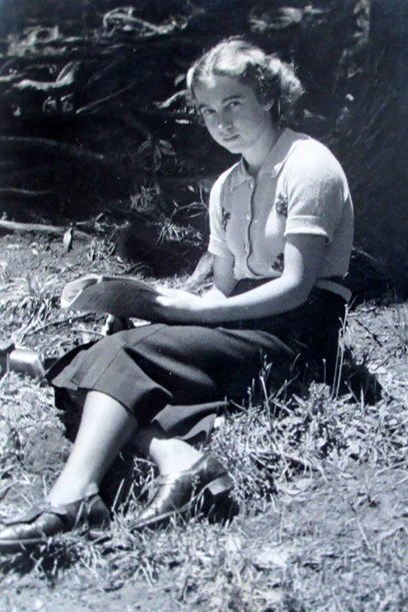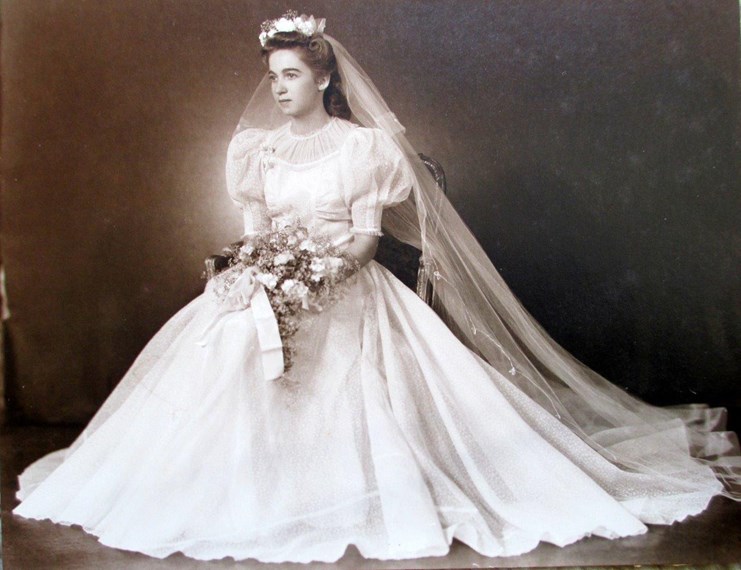Stories
Heather Masters
1917–2012

Heather Masters was in her first year at high school when her teacher noticed her artistic talent, setting her up for what was to become a career in fashion illustration and design. Miss Matthews didn’t just encourage her student, she set up a special desk equipped with art materials. There, while the other students continued their work, Heather drew and painted.
As a child, Heather was a quiet, artistic, free-spirited girl with a vivid imagination. An innate shyness would vanish when an opportunity to fulfil a daydream came along. A family story tells of her dressing up in a painstakingly fashioned long woollen wig, a sun hat embellished with feathers and ribbons and a bra filled out with halved tennis balls. Dressed in this costume, she would sit on the gate post and pose for passers-by.
When she was 14, Heather’s family travelled to Christchurch for a holiday. There, without preamble or discussion, her father deposited her with relatives, enrolled her at the School of Art, then departed. She never really went home again. Initially she was heartbroken and homesick, but gradually she made new friends and became occupied by her studies.

Heather, age 15, sitting by the Avon River in Christchurch. Image © Lyndsay Brock.
Canterbury School of Art in the 1930s was an extraordinary institution, dedicated to the Arts and Crafts movement. The only subjects found in standard curricula were English, mythology and physical education. The rest of the day involved classes in the fine arts, design, metalwork, jewellery making, woodwork, illustration, calligraphy, embroidery and fashion. In all these subjects, students were expected to design, draft and create every item from the ground up. Heather was only 14 years old when she created a poster for Roslyn Wools during her commercial class at the Canterbury School of Art in the 1930s.

Heather Masters was only 14 years old when she created this poster for Roslyn Wools during her ‘commercial’ class at the Canterbury School of Art in the 1930s. Image © Museum of New Zealand Te Papa Tongarewa.
The philosophy of the time required that students mastered all of the creative skills. Heather made some stunning jewellery and metalwork, but she showed particular talent in her fashion class. The skills she learned became central to her early career and family life.
In 1936, Heather’s fifth and final year at Canterbury, another abrupt change took place courtesy of her father. He withdrew her from the school and sent her to Auckland to take up a pre-arranged job with Silknit, a lingerie manufacturer. She illustrated the firm’s catalogue, which involved fine pen and ink drawings of the range, reproducing every detail of lace patterning. She loathed the job.
Eighteen months later, another job was arranged by her father, this time with Sir Dove-Meyer Robinson’s firm, Childswear. Heather was the designer and pattern cutter. The basic pattern blocks she used are at the Devonport Museum. Heather enjoyed working for Childswear and was very kindly treated by the future mayor of Auckland and his family.

Heather Masters' design for the Auckland label Childswear.
As with many women of the time, marriage and children interrupted her career and she left Childswear in 1941.

Heather Masters, 1941.
For much of her adult life, the disciplines learned at a school influenced her life. She wore the most gorgeous gowns, turned her hand to incredibly complex fancy-dress costumes and some of her beautifully tailored children’s coats when from child to child for decades. She passed on many of those skills to her daughter Lyndsay Brock, who designed under her own label in the 1970s.
Heather’s portfolio from Canterbury languished in storage for more than 60 years, until her horrified daughter learned it was headed for the incinerator. She saved it and contacted author Ann Calhoun, the author of The Arts and Crafts Movement in New Zealand 1870-1940. Heather’s work was shown in the Simplicity and Splendour exhibition at the Christchurch Art Gallery (November 2004 to February 2005) and many items have been acquired by the Museum of New Zealand Te Papa Tongarewa. Heather remained completely bemused by this attention. "I was just an ordinary girl who went to art school - I didn’t think my work was anything special."
Text by Lyndsay Brock and Ann Calhoun. Banner image © Lyndsay Brock.
Last published April 2017.